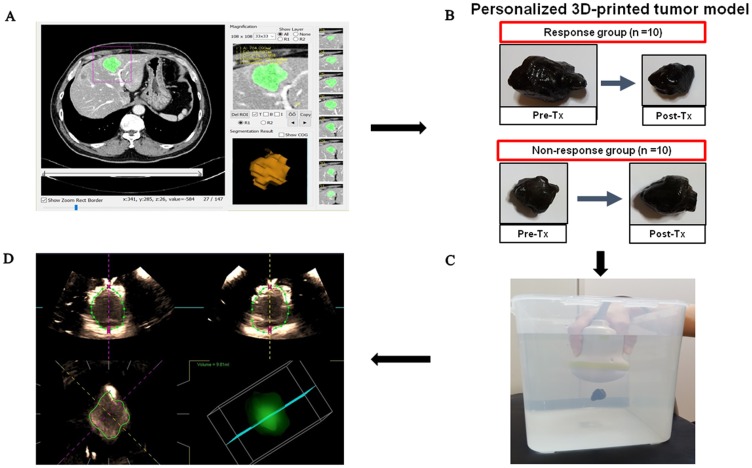Fig 2. Study process flowsheet.
A) Screenshot of the in-house program of segmentation and 3-dimensional volume-rendering reconstruction of the tumor. B) A personalized 3D-printed phantom tumor model constructed by the software and 3D printer. We had irereguler shaped 3D-printed phantom tumor model using the baseline CT and post-chemotherapy CT images in both response and non-response groups. C) Experimental setting for sonographic volume measurement of the phantom using 3D-transducer scanning through an automated sweeping movement. D) Volume measurement of the phantom. Manual outlining of the boundaries of the tumor phantom at 8 images of transverse (upper left) or longitudinal (upper right) plane. Then, boundaries at coronal plane (lower left) and 3D reconstructed image and its volume (lower right) were automatically generated by the built-in software of the ultrasound unit.

